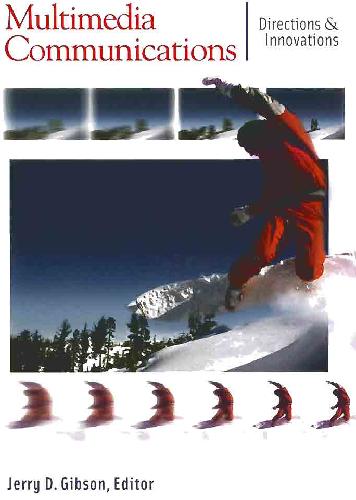Product desciption
Multimedia Communications Directions And Innovations Gibson Jd Ed by Gibson J.d. (ed.) 9780122821608, 0122821602 instant download after payment.
This book is a collection of invited chapters on multimedia communications contributed by experts in the field. We use the term multimedia communications to encompass the delivery of multiple media content such as text, graphics, voice, video, still images, and audio over communications networks to users. Note that several of these media types may be part of a particular interaction between (or among) users, and thus we are not simply considering networks that support different traffic types. We are specifically interested in applications that incorporate multiple media types to deliver the desired information. Example applications of interest include two-way, multipoint videoconferencing and one-way streaming of video and audio in conjunction with text or graphical data.The topics covered in the book were carefully selected to provide critical background material on multimedia communications and to expose the reader to key aspects of the hottest areas in the field. Chapter 1, Multimedia Communications: Source Representations, Networks, and Applications, provides a context for the rest of the book, but each chapter is intended to stand alone and the chapters can be read in any order so that readers may get the necessary information as efficiently as possible. Among the topics discussed are wireline network technologies and services, compression standards, video-on-demand, IP telephony, wideband wireless data, IP over wireless, transcoding of multimedia content, and multicasting. It would be difficult to find a more timely collection of topics in a single volume anywhere.The book is intended for beginners and experts alike, and the chapters are descriptive in nature, focused primarily on the presentation of results, insights, and key concepts, with a minimum of mathematical analyses and abstraction. The beginner will be able to get a good overview of the field and an introduction to fundamental ideas, while the expert will be able to discern very quickly what technologies are critical to current applications and what technologies will form the basis for future services and products.The authors are chosen from both industry and academia in order to give the reader as clear a view of current practices and future directions as possible. In reading these chapters myself, I am amazed at how much content the authors have been able to include in so few pages. I am most appreciative of these authors and their efforts, and I want to thank Joel Claypool at Academic Press for his guidance and patience. I hope that each reader finds this book of great value.


